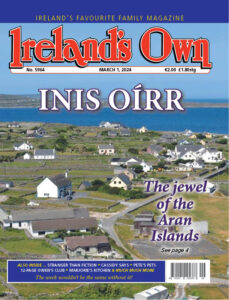Harry Waren recently paid a visit to the ‘Kingship and Sacrifice’ exhibition at the National Museum of Ireland, which was established following the discovery of two Iron Age bog bodies at Oldcroghan, Co. Offaly and Cloneycavan, Co. Meath.
Ireland’s history, culture, and heritage are beautifully preserved and displayed in the National Museum of Ireland in Dublin. This museum is a testament to Ireland’s commitment to safe-guarding its legacy for everyone to enjoy. The museum showcases Ireland’s historical, artistic, and cultural achievements, and invites visitors to discover Ireland’s fascinating past through its diverse exhibits.
At the heart of this illustrious collection, the exhibition of the Bog Bodies emerges as haunting witnesses to ancient rituals and customs. This display meticulously ensures the proper reverence for both the remains and the sensitivities of the observer.
 These archaeological finds date back to different periods, ranging from the Iron Age to many centuries later. The unique preservation conditions of the bogs, characterised by acidic and waterlogged environments, contributed to the remarkable state of preservation of these ancient human remains.
These archaeological finds date back to different periods, ranging from the Iron Age to many centuries later. The unique preservation conditions of the bogs, characterised by acidic and waterlogged environments, contributed to the remarkable state of preservation of these ancient human remains.
The Bog Bodies in the museum’s collection are Cashel Man (c. 2000 BC), believed to be the oldest fleshed bog body found in Europe, Gallagh Man (470-120 BC), Clonycavan Man (392 to 201 BC), Old Croghan Man (362 to 175 BC), and Baronstown West Man (242 to 388 BC).
These exceptionally preserved human remains, unearthed from the country’s peat bogs, serve as time capsules, offering a fascinating glimpse into the lives and deaths of individuals from a bygone era.
The Bog Bodies, with their well-preserved skin, hair, and clothing, provide an intimate connection to the past, inviting contemplation and reflection on the mysteries of Ireland’s ancient civilizations.
There are also associated displays of royal regalia, horse trappings, weapons, feasting utensils, boundary markers and remarkably preserved votive deposits of butter known as bog butter.
The discovery of Bog Bodies often involves a combination of factors, such as drainage operations by farmers, turf cutting, or accidental finds by individuals. Remarkably preserved by nature, the bog bodies exhibit exceptional details, including skin, hair, and clothing, providing valuable insights into ancient lifestyles, customs, and even possible causes of death.
Researchers study these human remains to unravel aspects of past societies, shedding light on topics like burial practices, social structures of the communities they originate in, and very macabrely the evidence of ritualistic or sacrificial activities. The National Museum of Ireland houses and displays some of these fascinating Bog Bodies, contributing to our understanding of Ireland’s rich archaeological and historical heritage.
Continue reading in this week’s Ireland’s Own


